Sitges is a small but picturesque town on the coast of Catalonia, just 35 km south-west of Barcelona. In addition to its proximity to the famous metropolis, it is renowned for its beaches, cultural events, and unique architecture.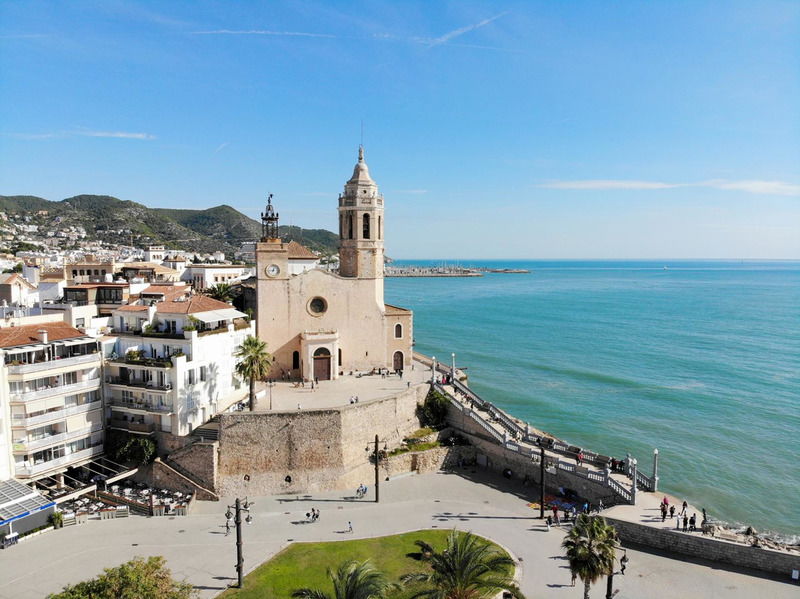
The name ‘Sitges’ comes from the Catalan word Sitja, which translates as ‘silo’ – these are underground cavities dug into the ground hundreds of years ago to store agricultural supplies and food. A village grew up around them, which is now called a town. Sitges has a population of just over 30,000. During the holiday season, this number increases fourfold! After all, there is so much to see and do here!
Sitges attracts thousands of tourists every year thanks to its cosy, atmospheric style and variety of attractions.
Sightseeing in Sitges
The best place to start exploring Sitges is the pedestrian promenade, Paseo Marítimo.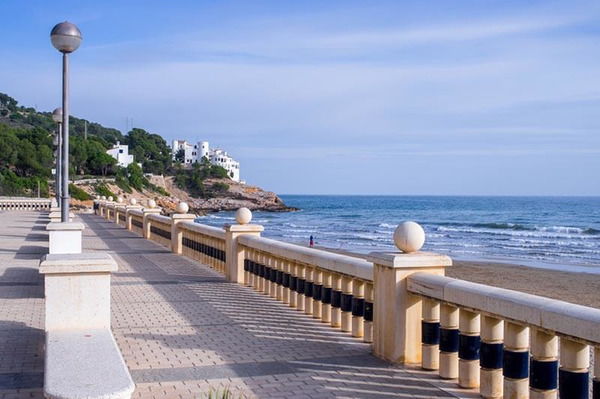
Getting there from Barcelona by public transport is very convenient: trains and buses run very frequently and the stops are located 10 minutes from the waterfront.
If you are travelling to Sitges by car (you can rent a car here), it is better to park on the spacious streets of the Vinyet neighbourhood (barrio Vinyet). Well, if you prefer private parking spaces in the centre or close to the beach, there are quite a few of them here, but they are inconvenient and narrow. What's more, parking fees are quite expensive.
Paseo Marítimo - Sitges promenade 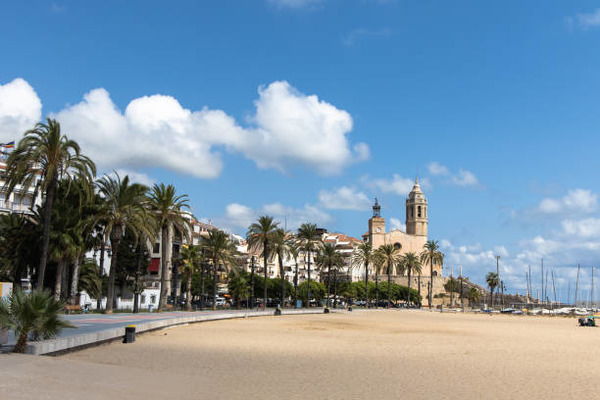
The Sitges promenade is a 2.5 km stretch of beautiful walking area, starting at the Terramar Hotel and ending at the Church of San Bartolomé. It is adorned with palm trees, interesting sculptures, benches and well-kept lawns, offering picturesque views of the beaches on one side and luxurious villas on the other. During the summer months, the promenade is bustling with tourists, while the rest of the year it is a peaceful place to relax.
A walk along the embankment offers a unique experience: the sound of waves, the rustling of palm trees and the singing of birds create a relaxing atmosphere. In the morning, you can meet athletes and elderly couples here, and in the afternoon, teenagers and children. On weekends, families and couples gather on the embankment to enjoy the joy and carefree atmosphere. Tourists can be found here at any time of the day or night, especially during the holiday season. 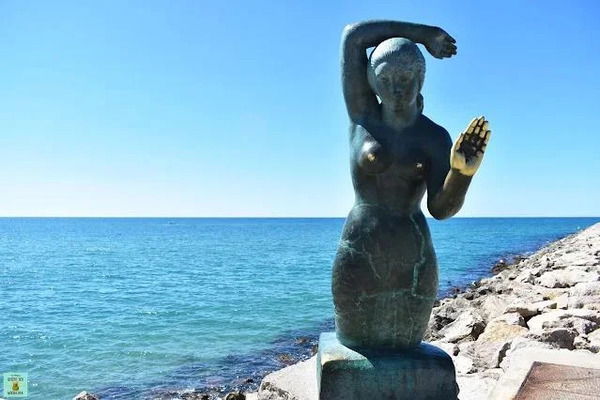
Towards the end of the promenade, you will come across the bronze sculpture ‘Mermaid’, created by Catalan artist Manuel Borras in 1983. It is one of the city's main attractions, symbolising its deep connection with the ocean and mythology.
Church of San Bartolome and Santa Tecla
Iglesia de San Bartolomé y Santa Tecla. The Church of San Bartolomé and Santa Tecla is a Gothic temple built in the 17th century in close proximity to Sitges beach. A stroll along the promenade will smoothly lead you to this temple. It is small, consisting of three naves with a semicircular vaulted roof.
It looks quite nice from the outside. This temple is a local landmark largely due to its privileged location and impressive views.
Inside the church, noteworthy features include a Baroque organ dating from 1697, crafted by monks Bartomeu Triall and Joan Roig; the Baroque altar of Sorrow from 1702, the work of Joan Roig; the gilding by Joan Moix, as well as the remains of the Gothic altar of San Bartolomé and Santa Tecla, the work of the Neapolitan artist Nicolás de Serdenza. In addition, the baptistery chapel, dedicated to Our Lady of Montserrat, houses paintings by Pere Pruna and two other altarpieces. Beneath the choir are two tombs dating from 1317 and 1322 and the ossuaries of Bernat de Fonollara, Galceran de Ribes and Galceran de Pax. Visiting the church is free, but unfortunately it is only open to the public from 7:00 p.m. to 8:00 p.m.
Maricel Museum - Palau de Maricel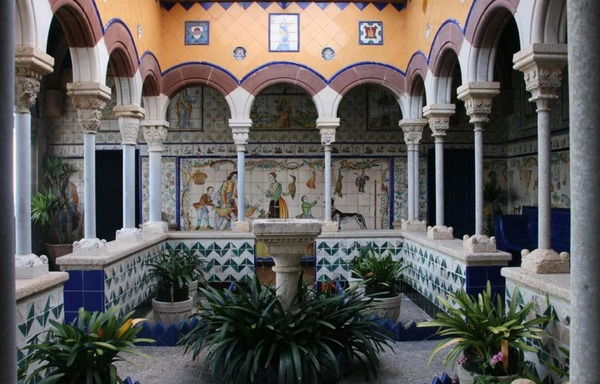
The Marissell Palace Museum is one of the most iconic buildings in Sitges. As part of the Marissell art complex, it is also known as Marissell de Terra to distinguish it from the museum also known as Marissell de Mar.
The majestic Golden Hall, Blue Hall, Chapel Hall, Ship Hall, Terraces, and Cloister, which offer magnificent views of the Mediterranean Sea, are the main rooms that make up the palace. Distinguished by their distinctive ‘nucentista’ style, the various rooms feature unique décor that emphasises their character.
Currently, the palace serves three functions: first, it is a venue for very important institutional and cultural events that are of great significance to the social and cultural life of Sitges, such as concerts, lectures, or presentations. Secondly, some of the rooms are used for events organised by organisations and companies that rent them, as well as for civil weddings. Finally, the rooms, terraces and cloisters are open to visitors as part of the tours organised by the museums of Sitges. During the summer months, the programme of events is expanded to include castanet and flamenco concerts and full moon dinners on the magnificent terraces.
The palace is open to visitors from 10:00 to 14:00. Admission is charged, but it is inexpensive, starting at 5 euros.
Cau Ferrat Museum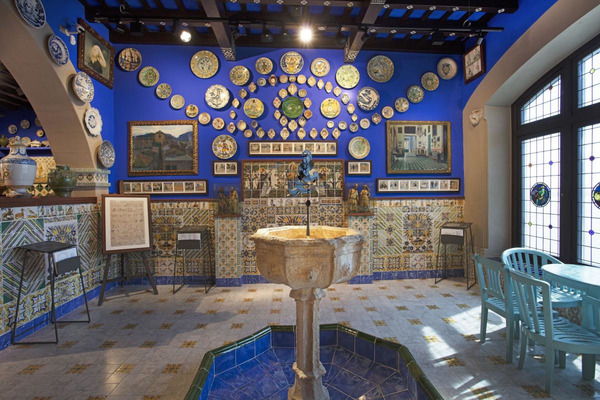
Another interesting museum, Cau Ferrat, is located nearby. It was founded in 1893 by artist Santiago Rusiñol. In 1933, it became a public museum, retaining its unique artistic atmosphere. The collection features ancient and modern art, including works by Rusiñol, Picasso and other famous artists.
The museum is also known for the events organised by Rusiñol, which made it a centre of modernism. Between 2010 and 2014, the building was renovated, restoring its historical features. It is a must-see for anyone interested in the art and culture of Sitges.
Old Town - Casco Antiguo de Sitges 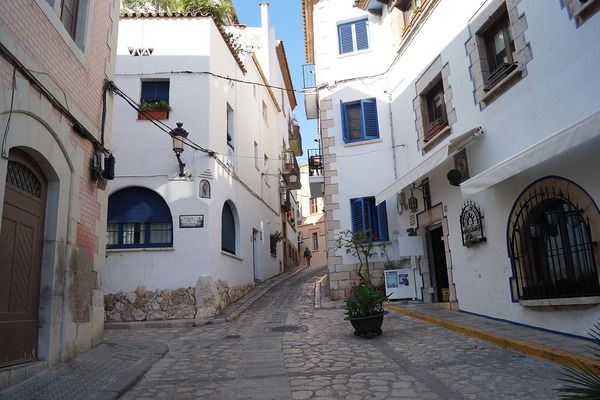
The old town of Sitges is considered a vivid reflection of its rich history and impressive architecture. Here, visitors to the city can enjoy modernist buildings created by local craftsmen and artisans. These buildings play a key role in Sitges' cultural heritage.
A leisurely stroll through the cobbled streets of Sitges will give you the opportunity to immerse yourself in the atmosphere of this amazing city. Start your journey at Plaça del Baluard square, then continue along Fonollar Street. When you reach Davallada Street, you will find the remains of a medieval wall that once protected the city from enemies.
This area is not only beautiful, but also allows you to touch history, opening up different eras before you — from the Middle Ages to Catalan modernism. Every place here has its own history, and you can enjoy a unique combination of ancient architecture and modern elements.
Street of Sin - Calle del Pecado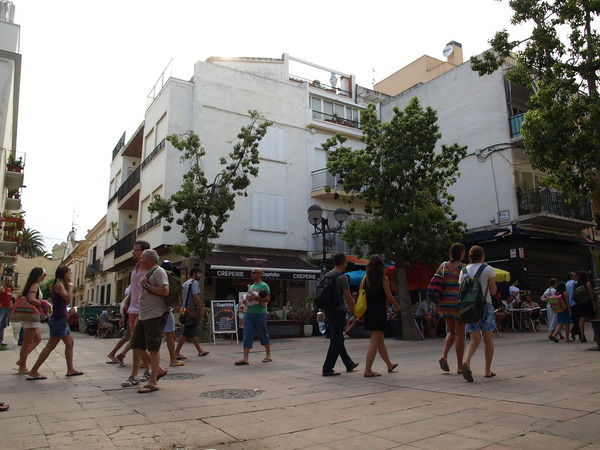
The name of the street is quite frightening, but it's not what it seems. It's just related to a story from 1956, when singers were stopped by the police and the question of the sinfulness of singing at night arose. The street offers a variety of establishments for every taste, including the famous Club 33, which has been operating for over 50 years.
Sitges is famous for its nightlife, especially on Calle del Pecado, which turns into a party hub from 11:30 p.m. During the day, it is a quiet street, but at night it fills with people looking to enjoy delicious Catalan cuisine, have a drink and dance. The street is located close to the beach and offers beautiful views of the Catalan coast. It is known as Calle 1 de Mayo and is a popular hub for bars and restaurants in the city. This is the perfect place to socialise with friends over wine or cocktails. If you want to have fun in Catalonia, Calle del Pecado is a must-see!
Sculpture by Sitges de Subirachs - Escultura Sitges de Subirachs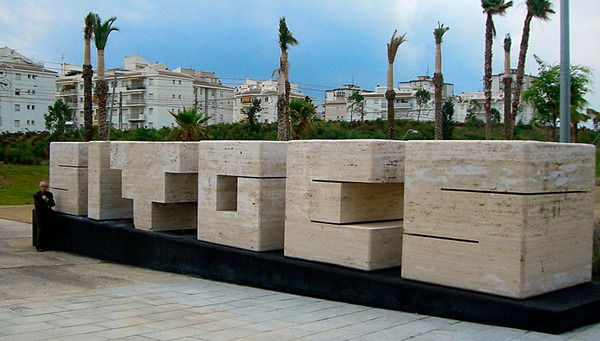
In 2008, Catalan artist Josep Maria Subirachs created a monumental sculpture made of six stone blocks, each 1.60 metres high, in Can Robert Park in Sitges. The sculpture forms the word ‘Sitges.’ It quickly became a notable landmark, reflecting the city's artistic heritage. Subirach is known for his geometric shapes, and this work fits harmoniously into the landscape of the park, which is also worth visiting. The 3.7-hectare Can Robert Park offers green spaces, playgrounds and an amphitheatre, making it a popular destination for locals and tourists alike. And also, there is a street market here on Thursdays.
Sitges beaches
One of the main reasons tourists come to Sitges is its magnificent beaches. The city has several beaches, each with its own unique characteristics and atmosphere.
San Sebastian Beach
San Sebastián Beach is one of the most popular beaches in Sitges. It is famous for its golden sand and gentle waves. Here you can enjoy all the charms of a beach holiday: swimming in the clear sea, sunbathing and sampling local delicacies in the cafés and restaurants located right on the shore. The beach is especially popular with families with children, as the water here is shallow enough to create safe conditions for playing.
Ribera Beach
Ribera Beach, located between the old town and the promenade, is also a popular place to relax. This beach is surrounded by the charm of Sitges' old architecture and offers not only a beach holiday but also views of excellent seafood restaurants. In addition, various events and festivals are often held here, making the atmosphere even more lively and festive.
Sitges is a unique city with a variety of attractions and cultural events. Its magnificent beaches, architectural masterpieces, green parks and vibrant festivals make it the perfect place to relax. There is something for everyone here. Whether you come for a weekend or a whole month, Sitges will leave you with unforgettable memories and a desire to return again.

 English
English  Español
Español  Русский
Русский